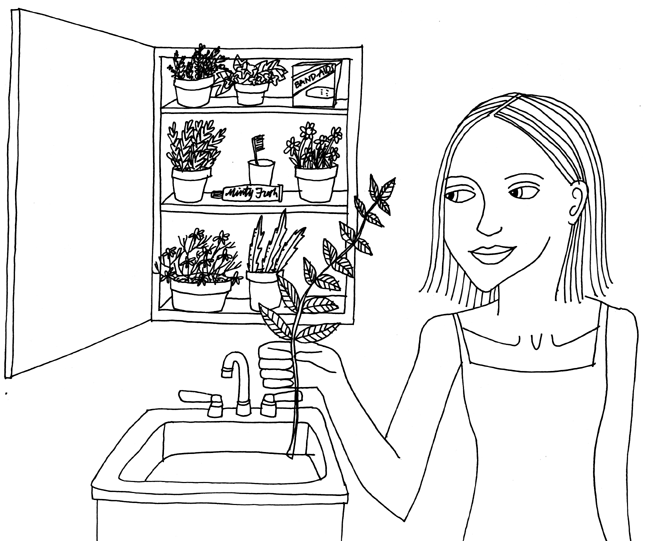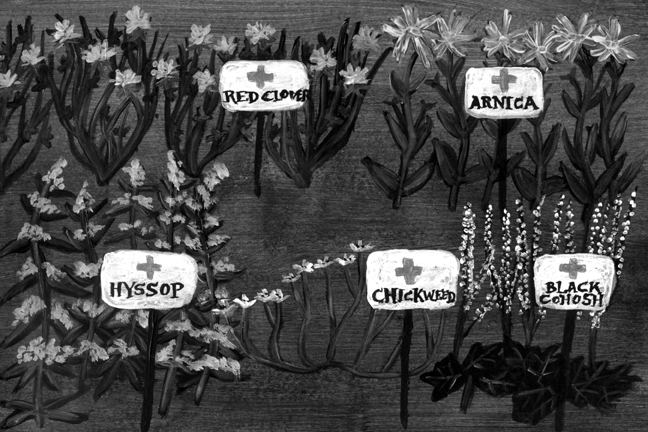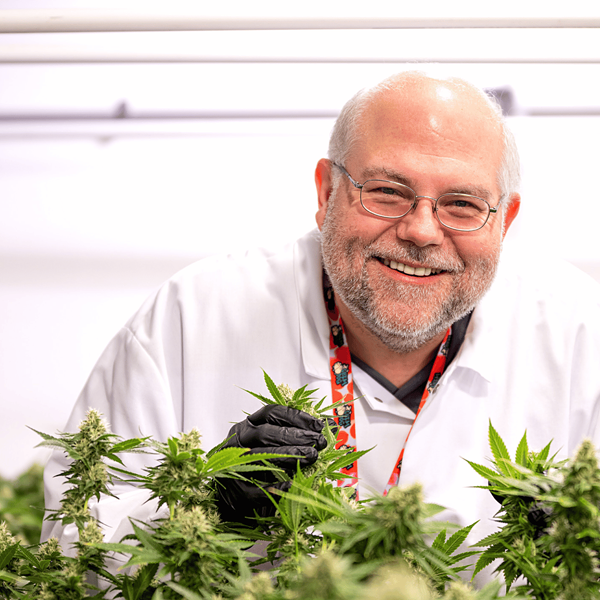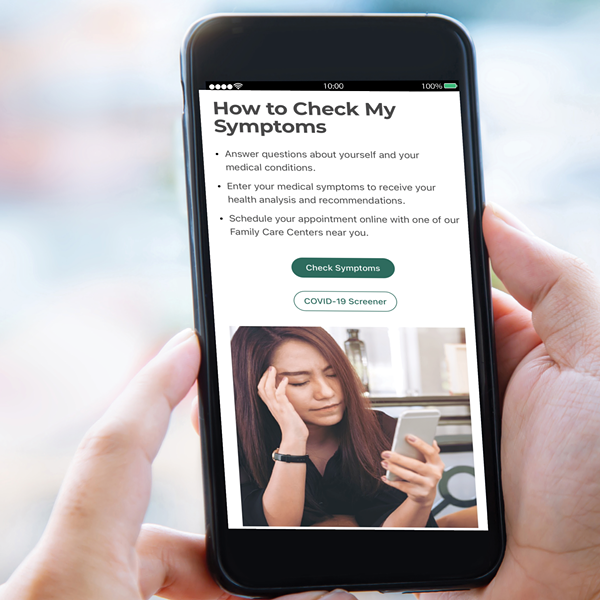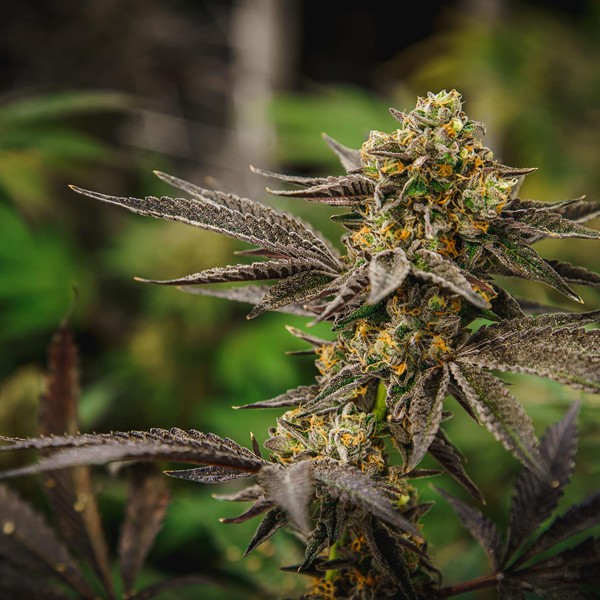My favorite herbs for infusion are nettle, oat straw, red clover, and comfrey leaf, but only one at a time. The tannins in red clover and comfrey make me pucker my lips, so I add a little mint, or bergamot, when I infuse them—just enough to flavor the brew slightly. You may also want to try a little salt in your infusion. That may make it taste better than honey will.
All herbs are not equal
There is a wealth of plants from which you can make teas, infusions, or other preparations. How do you choose which to use? All herbs are not equal: Some contain poisons, some don’t; some of the poisons are not so bad, and some can kill you dead. I divide herbs into four categories for ease in remembering how (and how much) to use. Some herbs nourish us, some tonify, some bring us up or ease us down, and some are frighteningly strong.
Nourishing herbs are the safest of all herbs. They contain few or no alkaloids, glycosides, resins, or essential oils (poisons). Nourishing herbs are eaten as foods, cooked into soups, dried and infused, or, occasionally, made into vinegars. They provide high-level nutrients, including vitamins, minerals, proteins, phytoestrogens and phytosterols, starches, simple and complex sugars, bioflavonoids, carotenes, and essential fatty acids.
Examples of nourishing herbs are burdock roots, chickweed herb (chickweed tincture dissolves cysts), comfrey leaves, elder blossoms and berries, mushrooms, nettle leaves and seeds, oat straw, plantain leaves and seeds, red clover blossoms, seaweeds, and violet leaves and blossoms.
Tonifying herbs are generally considered safe when used in moderation. They may contain alkaloids, glycosides, or essential oils, but rarely in quantities sufficient to harm us. Tonifying herbs act slowly in the body and have a cumulative, rather than immediate, effect. They are most beneficial when used for extended periods of time. Tonifying herbs may be used regularly (but usually not daily), for decades if desired.
Examples of tonifying herbs are burdock seeds, especially in an oil base; chasteberry; mug/cronewort herb, especially in vinegar; dandelion leaf, root, and flowers; echinacea root; ginseng root; hawthorn berries, leaves, and flowers; horsetail herb; motherwort leaves and flowers; and yellow dock leaves, roots, and seeds.
Stimulating or sedating herbs frequently contain essential oils, alkaloids, glycosides, or resins. Because these substances cause strong physical reactions, stimulating/sedating herbs are known for their rapid and pronounced effects, some of which may be unwanted. Stimulating/sedating herbs are most often prepared as tinctures (and wines), vinegars, teas, and infusions. Many stimulating/sedating herbs are used as seasonings in cooking as well. Despite my cookbook’s injunction to use only a little, I long ago learned that more aromatic herbs in my soups gave a “livelier” result.
Examples of stimulating/sedating herbs are leaves of aromatic mints such as catnip, lemon balm, lavender, sage, and skullcap; cinnamon bark; coffee beans; ginger root; kava kava root; licorice root; tobacco leaves; uva ursi leaves; valerian root; and willow bark and leaves.
Potentially poisonous herbs always contain alkaloids, glycosides, resins, or essential oils. And they contain large quantities or very potent forms of those poisons. Potentially poisonous plants can cause death directly through the actions on their targets (such as cardiac glycosides that stop the heart), or indirectly by causing the liver and/or the kidneys to fail (as they attempt to cope with and clear the poison from the system).
Some potentially poisonous herbs are belladonna, castor beans, cayenne, cotton root, goldenseal, liferoot/groundsel, nutmeg, poke root, tansy leaves and flowers, and wormwood.
With this introduction to our green allies, you are ready to learn more! I welcome you to sign up for Weed Wanderings, my free online newsletter, filled with simple, successful herbal wisdom. And you can take a class with an herbalist to discover a wealth of herbal remedies and plants that support our wellness. Be sure to visit the Wise Woman Center online for a bounty of ideas and information to expand your herbal explorations.
Excerpted from Be Your Own Herbal Expert by Susun S.Weed. Wise woman, women’s health expert, and green witch, Susun S. Weed is the author of the Wise Woman Herbal Series. Weed offers workshops, intensives, apprenticeships, and correspondence courses in herbal medicine and personal empowerment. www.susunweed.com.







